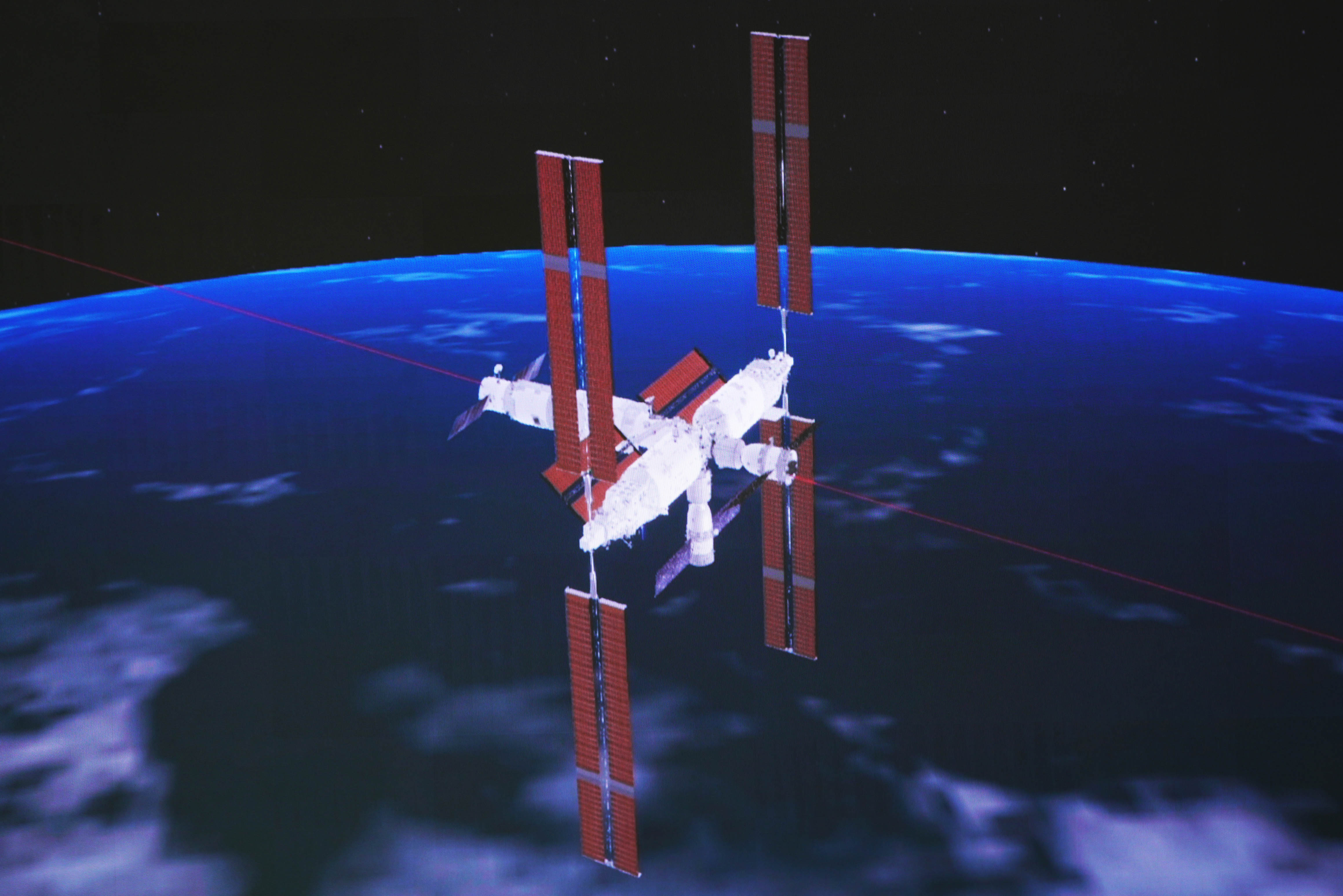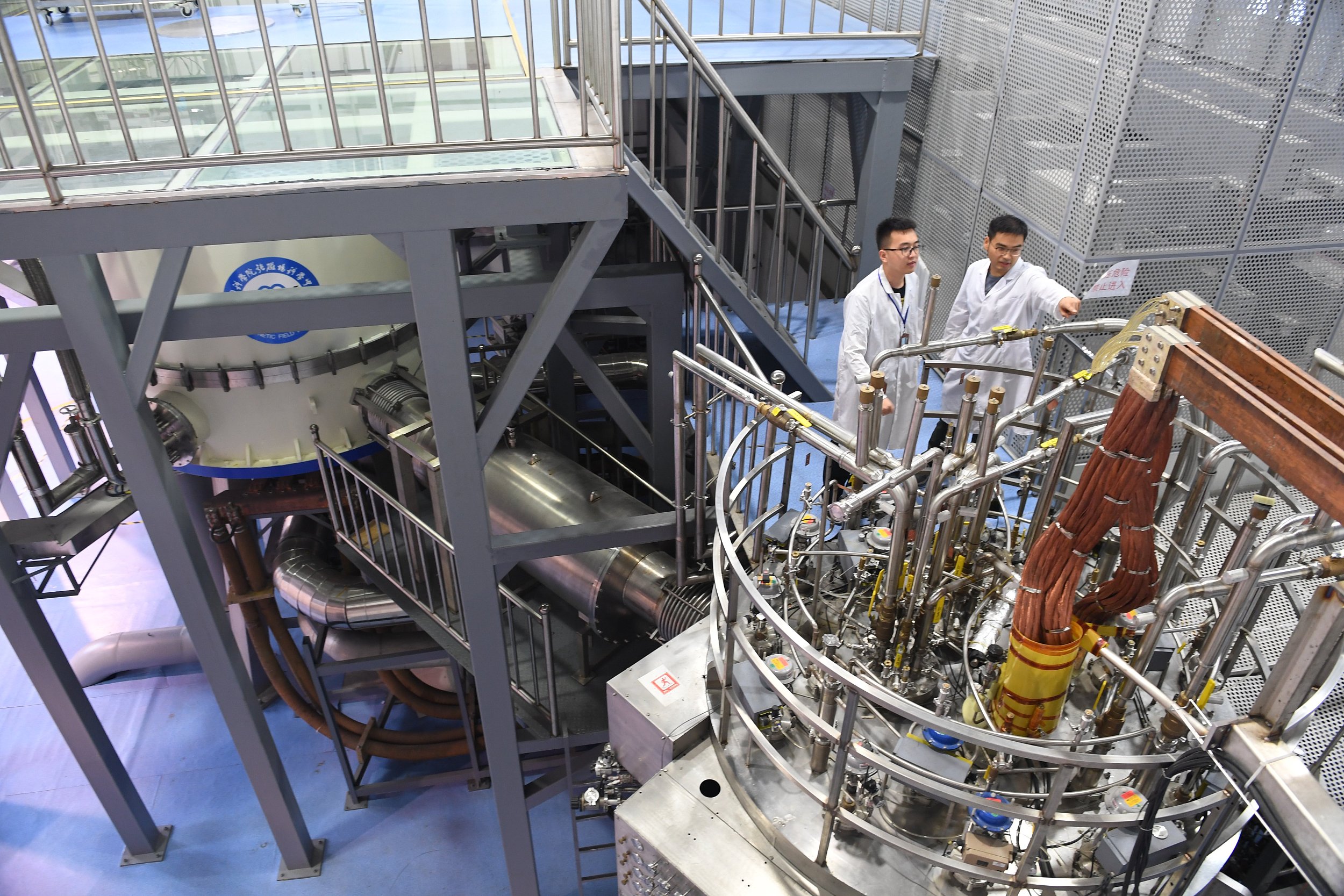Tiangong Space Station Completed:New Opportunities for Cooperation
This simulated image shows the manned spaceship Shenzhou-15 conducting a fast automated rendezvous and docking with the space station's Tianhe module on November 30, 2022. (PHOTO: XINHUA)
By LU Zijian
The lab module Mengtian, cargo craft Tianzhou-5 and the manned spaceship Shenzhou -15 were successfully launched for the past few months. The Shenzhou-14 and Shenzhou-15 crew had a historic gathering, making the number of astronauts at the in-orbit space lab reach six for the first time.
Tiangong, China's space station, was completed.
Cozy station packed with high-tech
With the docking of Mengtian and Wentian lab modules, the astronauts can enjoy a much bigger space for work and life, and the station can accommodate six astronauts at the same time.
An aerospace expert once described the Tiangong space station as a large house with three bedrooms, meaning the core module and two lab modules, and two living rooms, referring to Shenzhou manned spacecraft and Tianzhou cargo craft.
The weight of the space station with three modules is only just over 60 tons, much lighter than the International Space Station (ISS), which weighs more than 400 tons. However, in terms of the proportion of scientific experiment payloads in total weight of space station, Tiangong is no less than the ISS.
Many technologies have also been adopted in the station to facilitate its function.
The flexible solar array wings installed on Wentian can reach 55 meters and each wing spreads 110 square meters when fully unfolded, with a photoelectric conversion efficiency of over 30 percent. The electricity generated can guarantee the normal function of the facilities and daily life of astronauts.
A space communications highway was built to make the communication between space, ground, and astronauts more convenient. In addition, a sub system was enabled to provide wireless communications when astronauts were conducting extravehicular activities, which can be shown and recorded in real time.
Path to completion
It has been over a decade since the space station project was approved in September 2010, and in that time nearly 1,000 institutions joined the research and development of the space station.
Once the R&D in laboratories was completed, the project entered the phase of building the station, which is divided into two stages, key technologies verification and construction.
During the first stage, six flight missions were all successfully completed, including Long March-5B in May 2020, Tianhe core module, Shenzhou -12 manned spacecraft, Shenzhou-13 manned spacecraft, Tianzhou-2 cargo craft, and Tianzhou-3 cargo craft in 2021.
At a review meeting in April 2022, China Manned Space Agency (CMSA) suggested that the tasks and objectives set for the key technologies verification phase had all been realized, laying a solid foundation for the construction phase.
The construction phase started with the launch of Tianzhou-4 cargo craft in May. The Shenzhou-14 manned spacecraft was then launched in June, and the lab module Wentian in July. The lab module Mengtian, the Tianzhou-5 cargo craft and Shenzhou-15 crewed spaceship were launched later in 2022.
Operation outlook
Once the in-orbit construction is completed, the Tiangong space station will enter a decade long new phase of application and development, said Hao Chun, director of CMSA, at a press conference in April, 2022.
Two manned spaceships and two cargo spacecraft will be launched each year during this phase according to the initial plan. The astronauts will stay longer to conduct scientific experiments and technological tests, and maintain the space station.
Zhong Hongen, deputy chief designer of the space utilization system of the China Manned Space Program, said that 14 high-level scientific experiment cabinets have been installed inside the cabin, each like a small space lab.
Outside the cabin, Zhong said, there are flagship research facilities like three large payload mount points, two exposure experiment platforms, and the Xuntian Space Telescope that will fly independently in the same orbit as the space station.
Such facilities will support scientific research on space life science, microgravity physical science, space astronomy and geoscience, new space technologies and application, according to Zhong.
Tiangong will also become a crucial platform for international cooperation in aerospace. By far, nine international cooperation projects, involving 17 countries, have been selected to be conducted in the space station.
"We are willing to build China's space station into a platform to promote construction of a community with a shared future for mankind, and join hands with astronauts and space technology personnel to explore the mighty universe and benefit mankind," said Hao.



